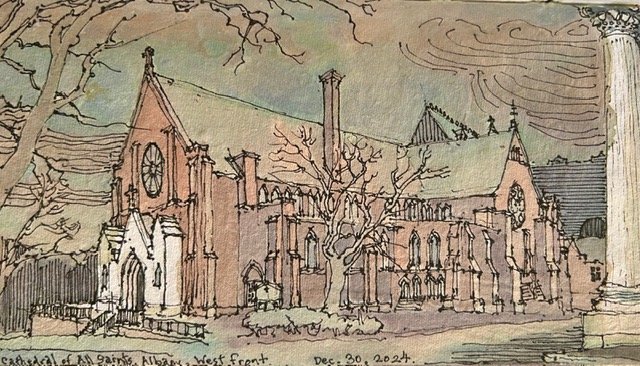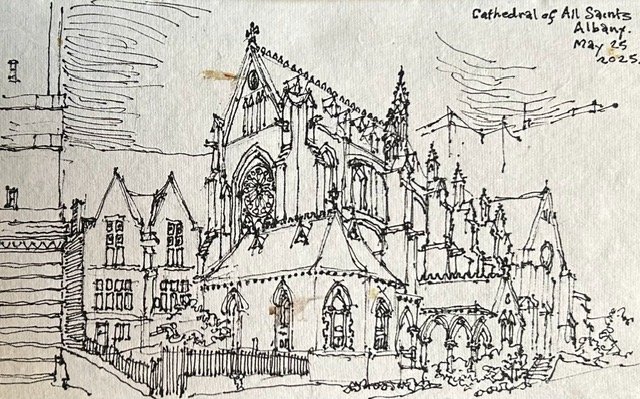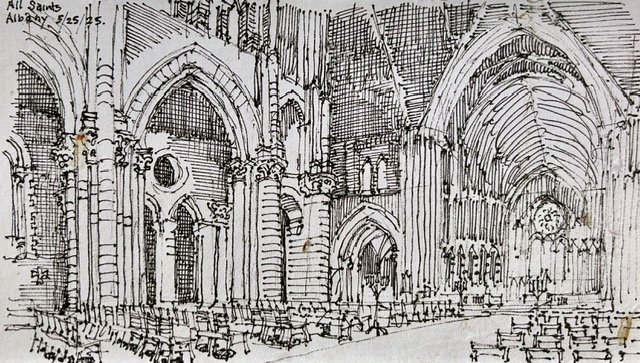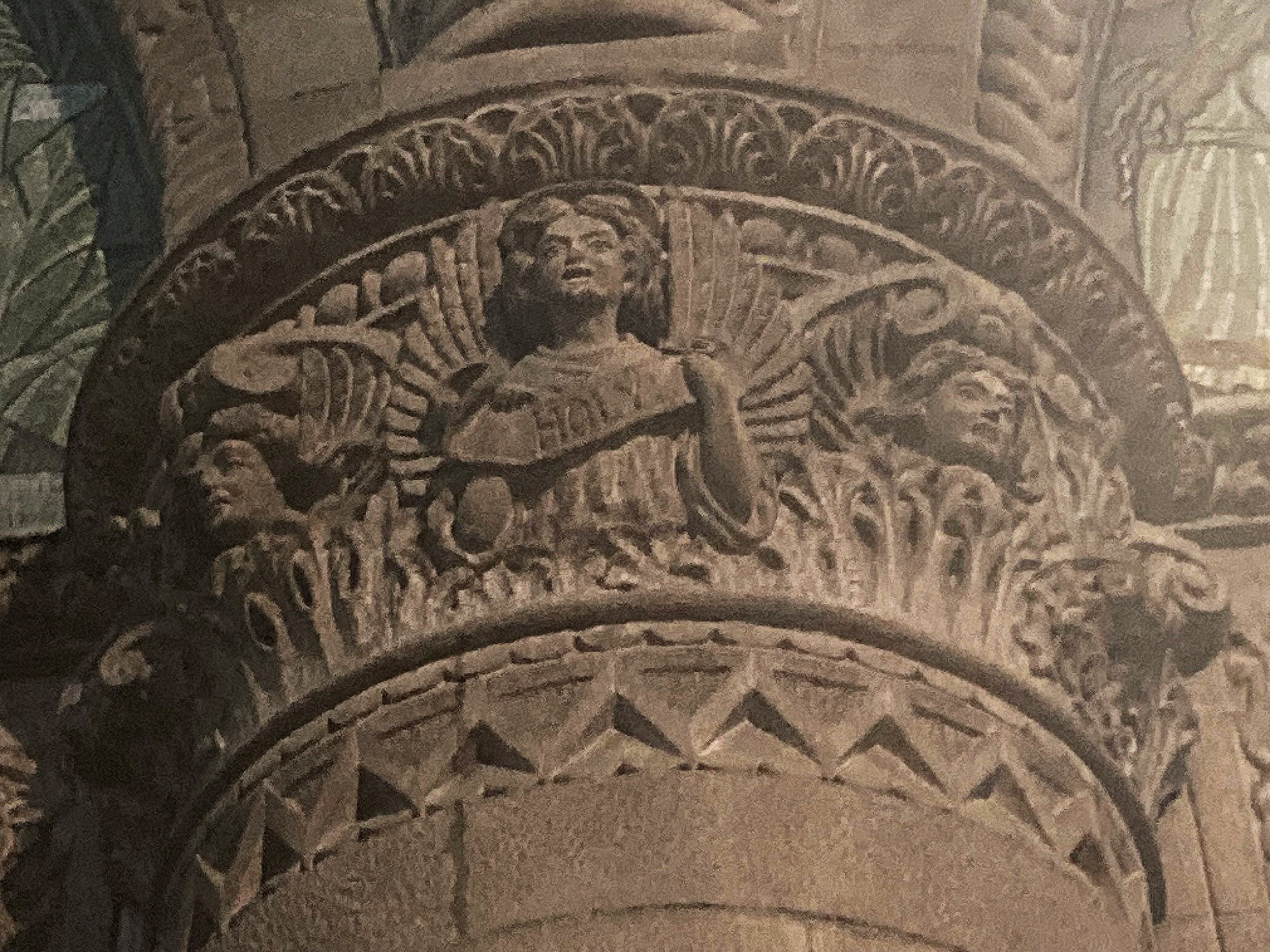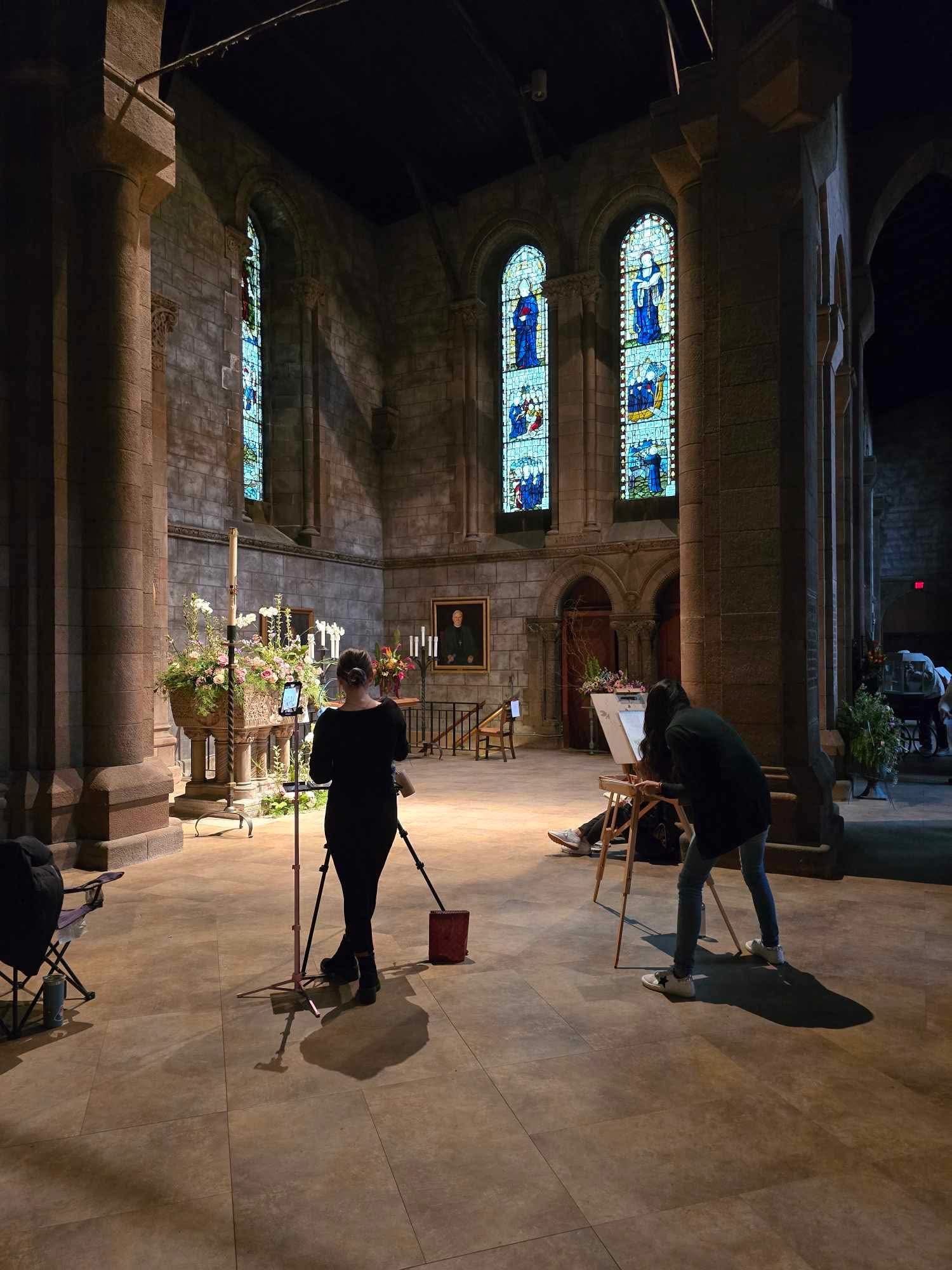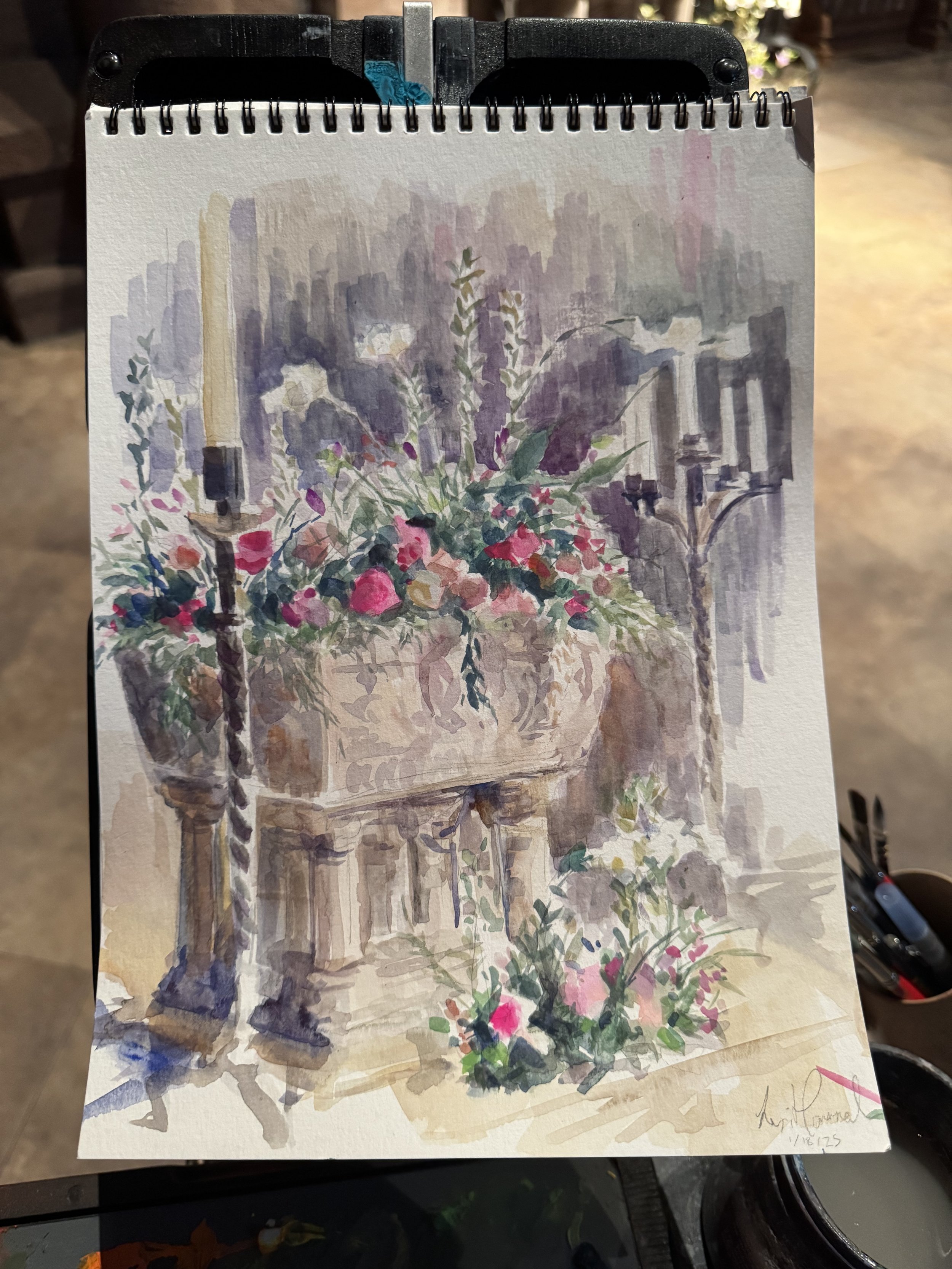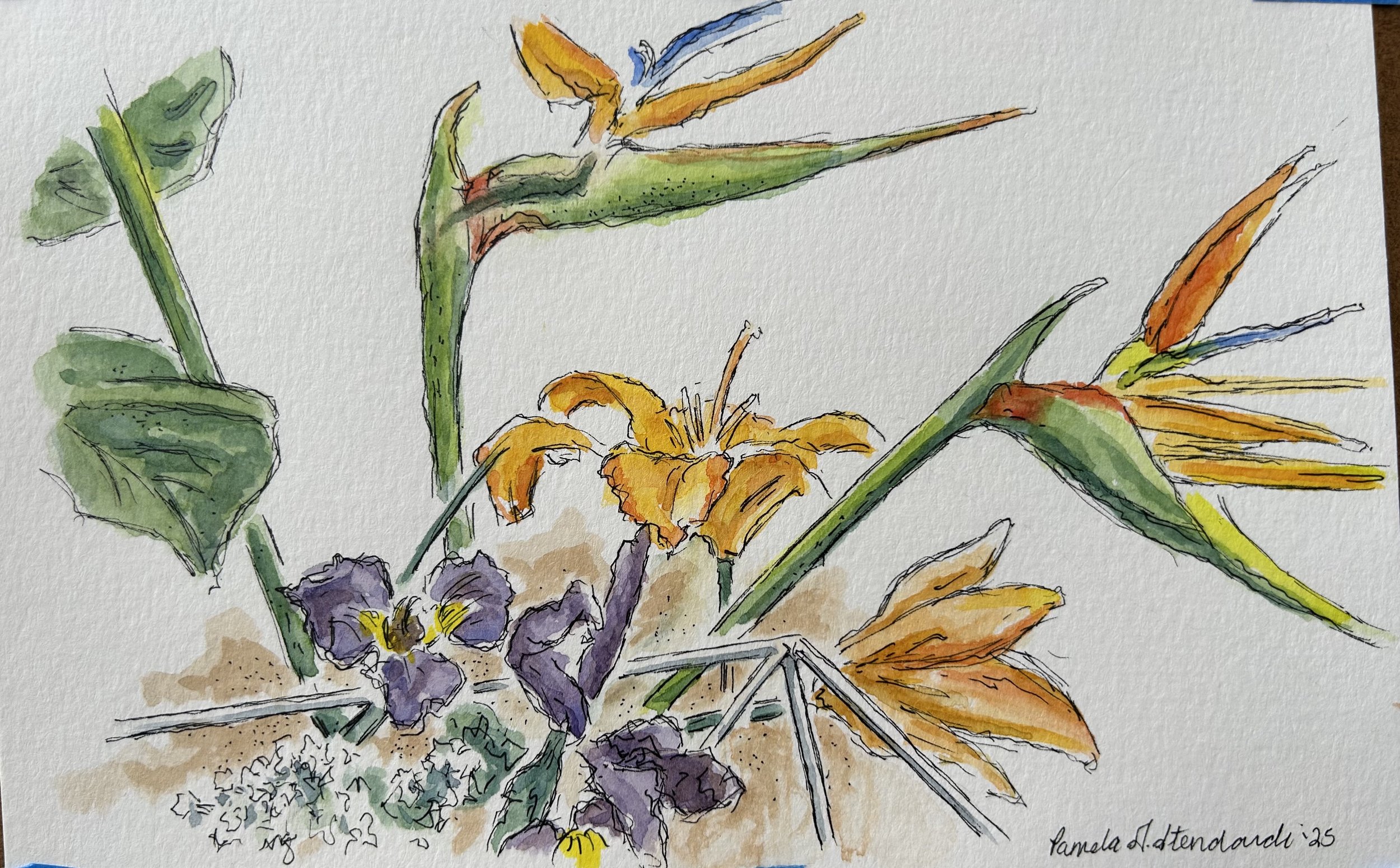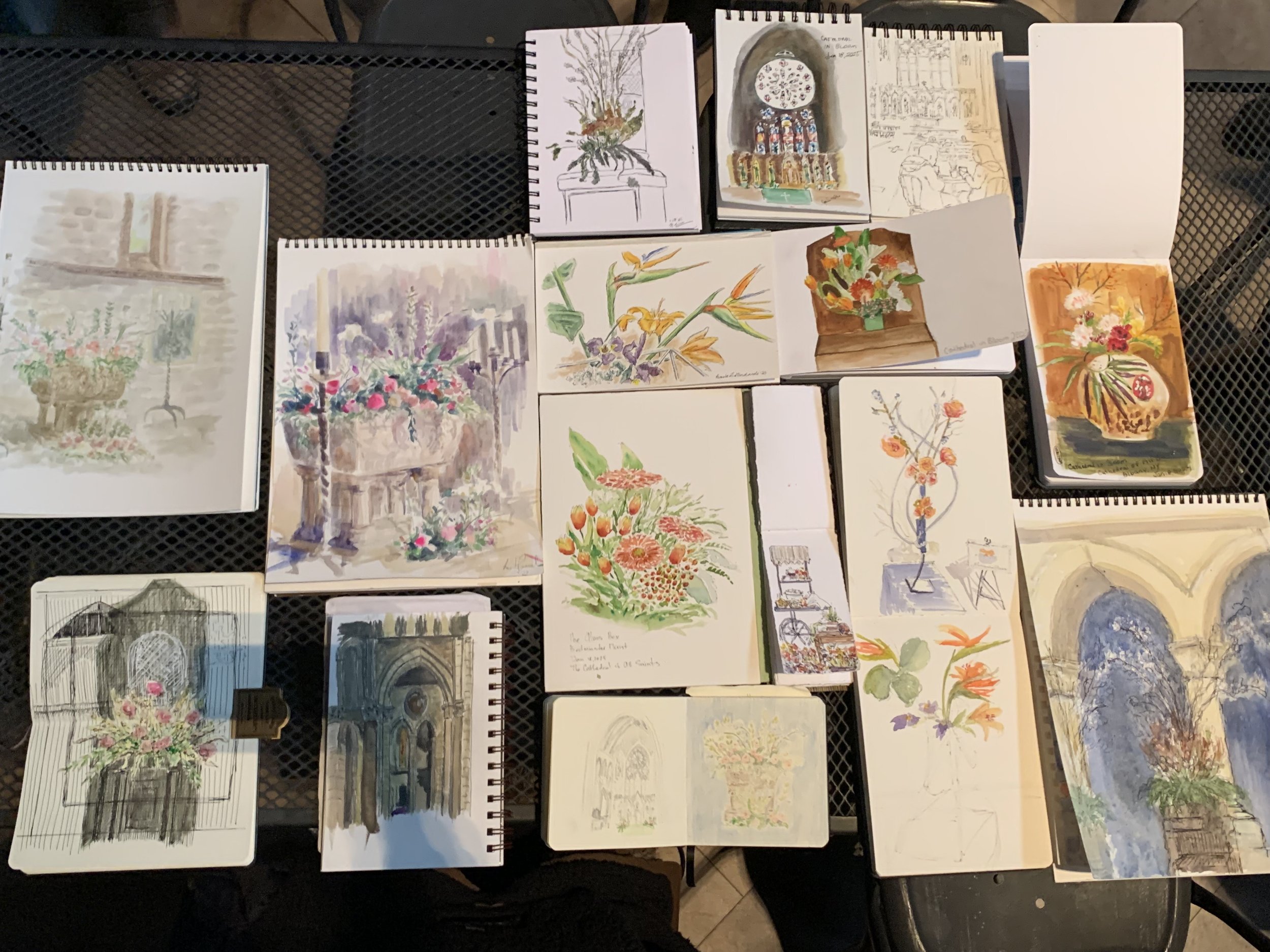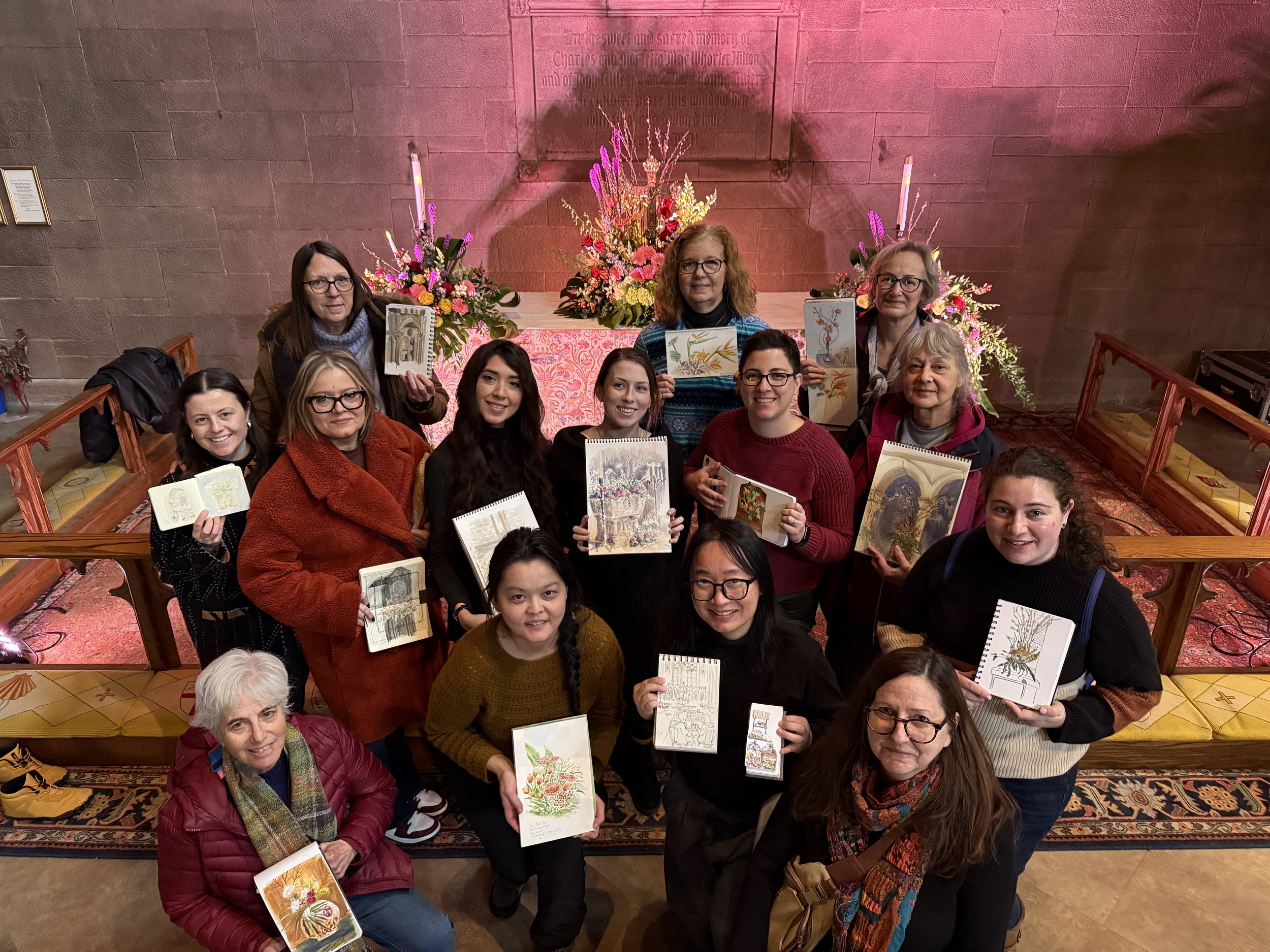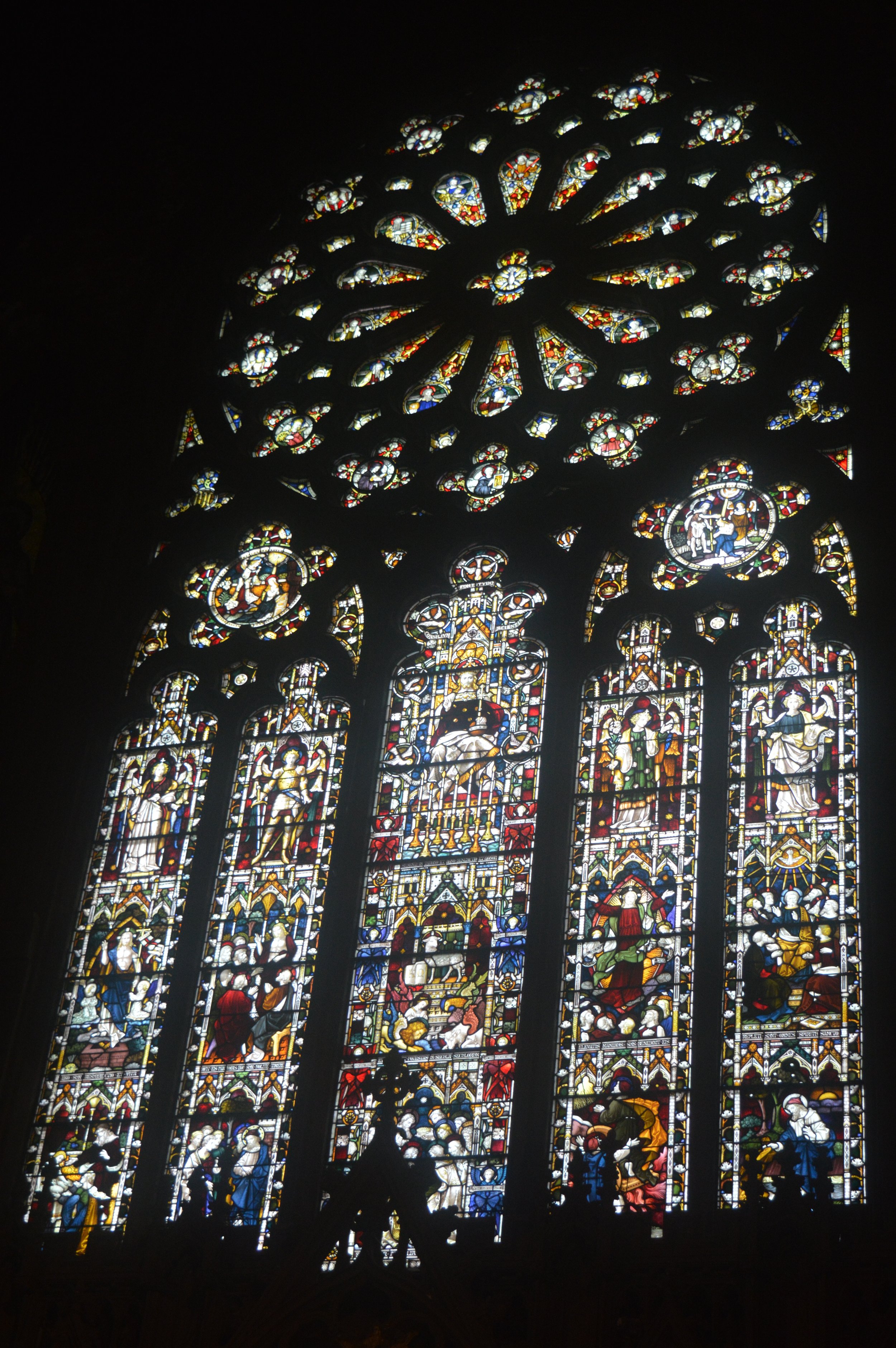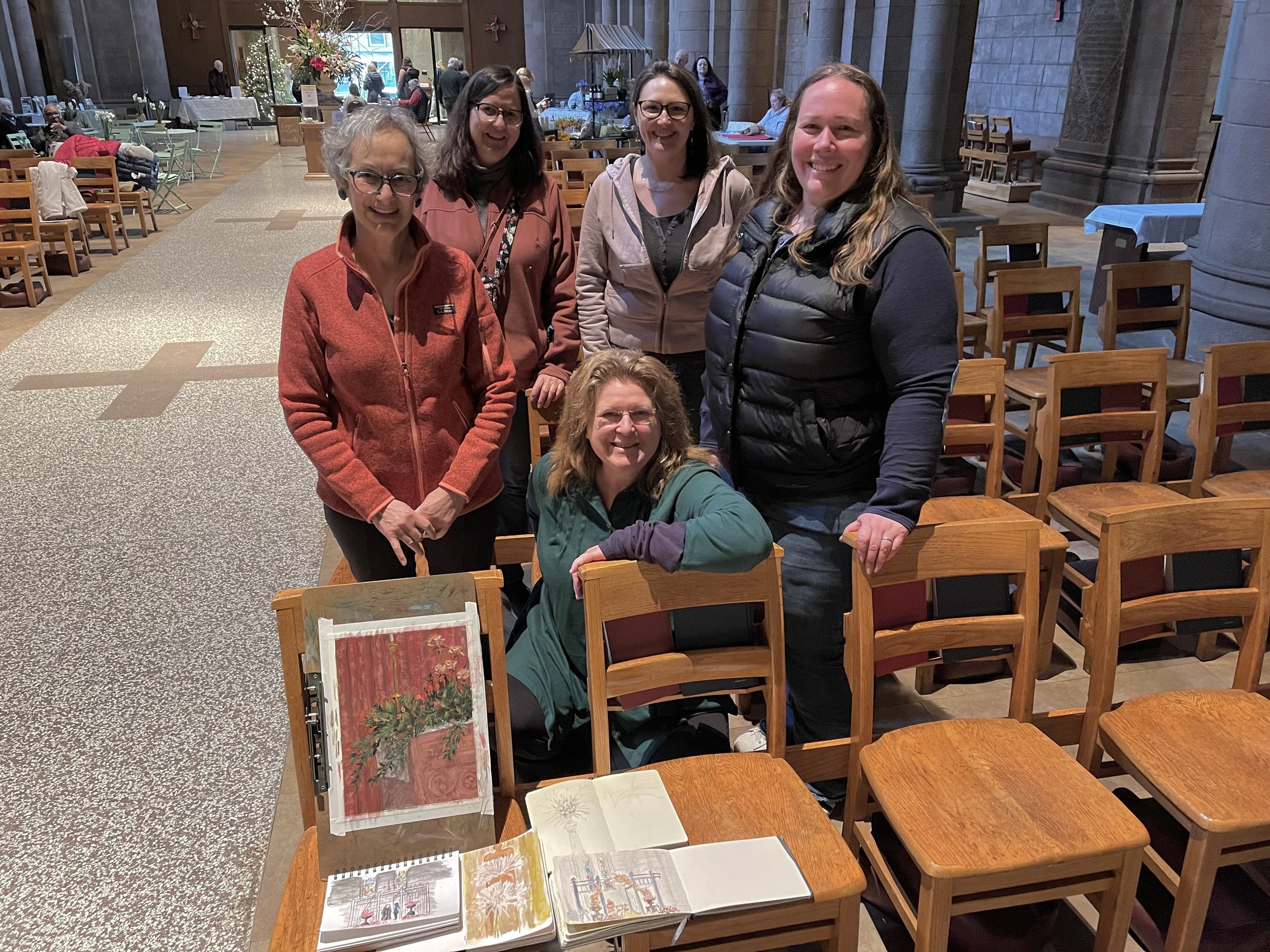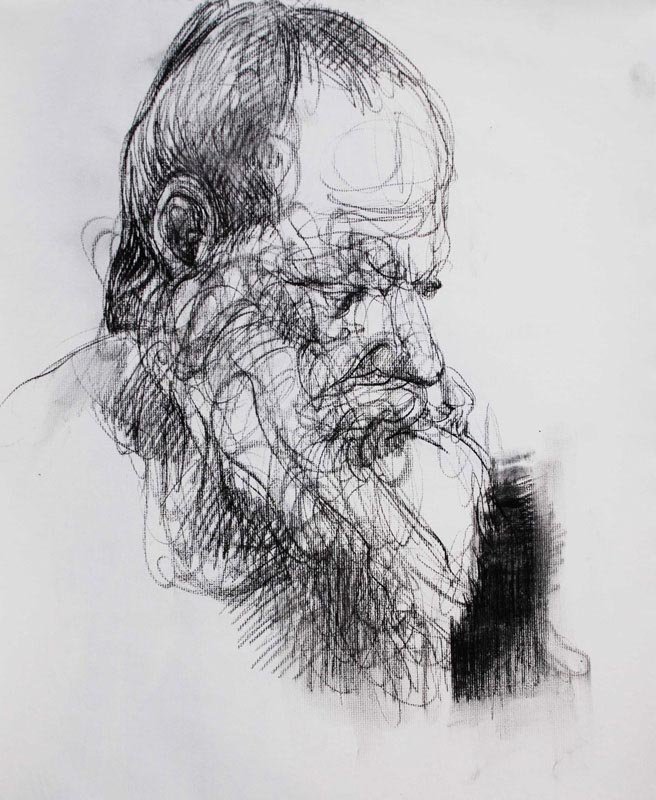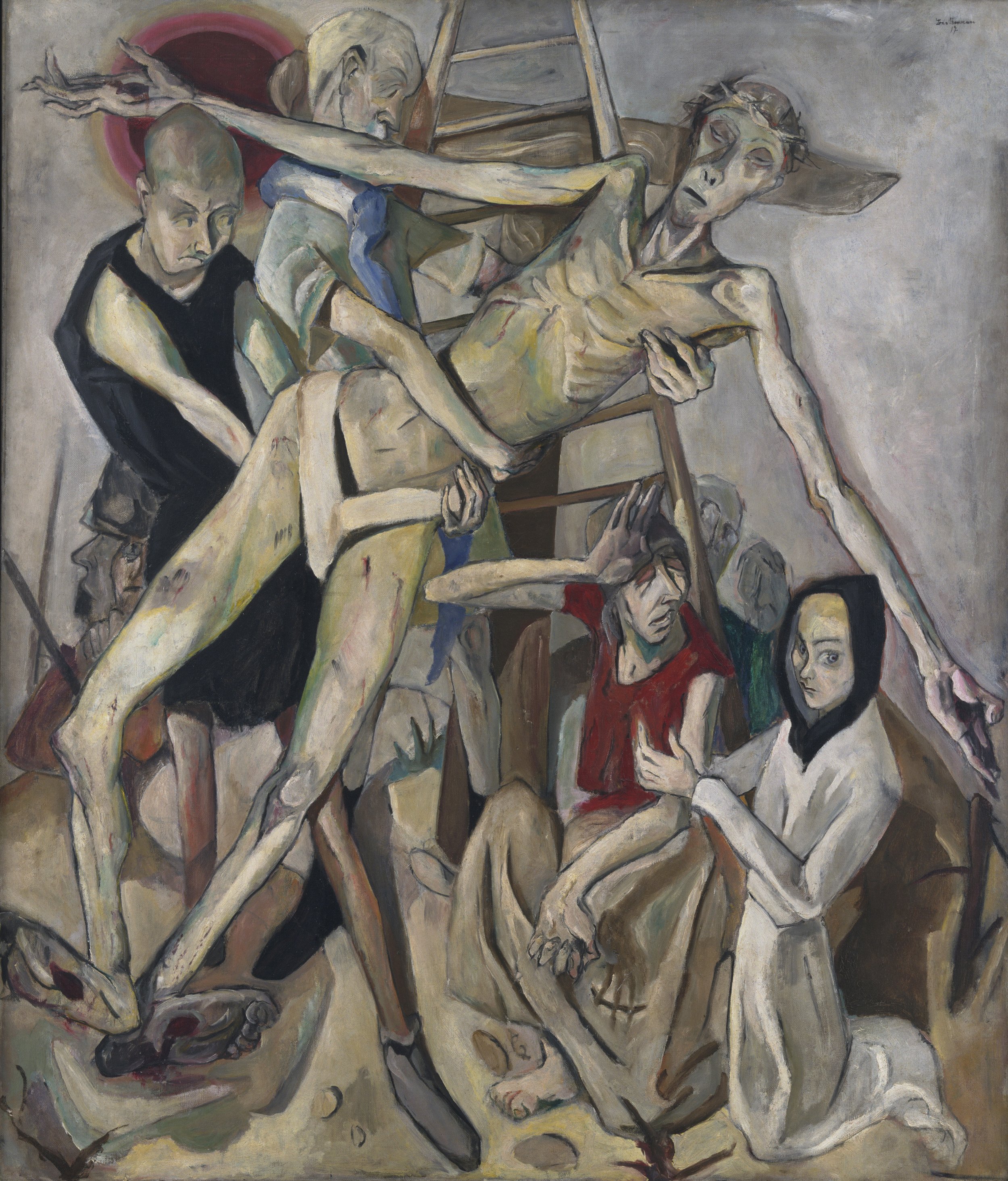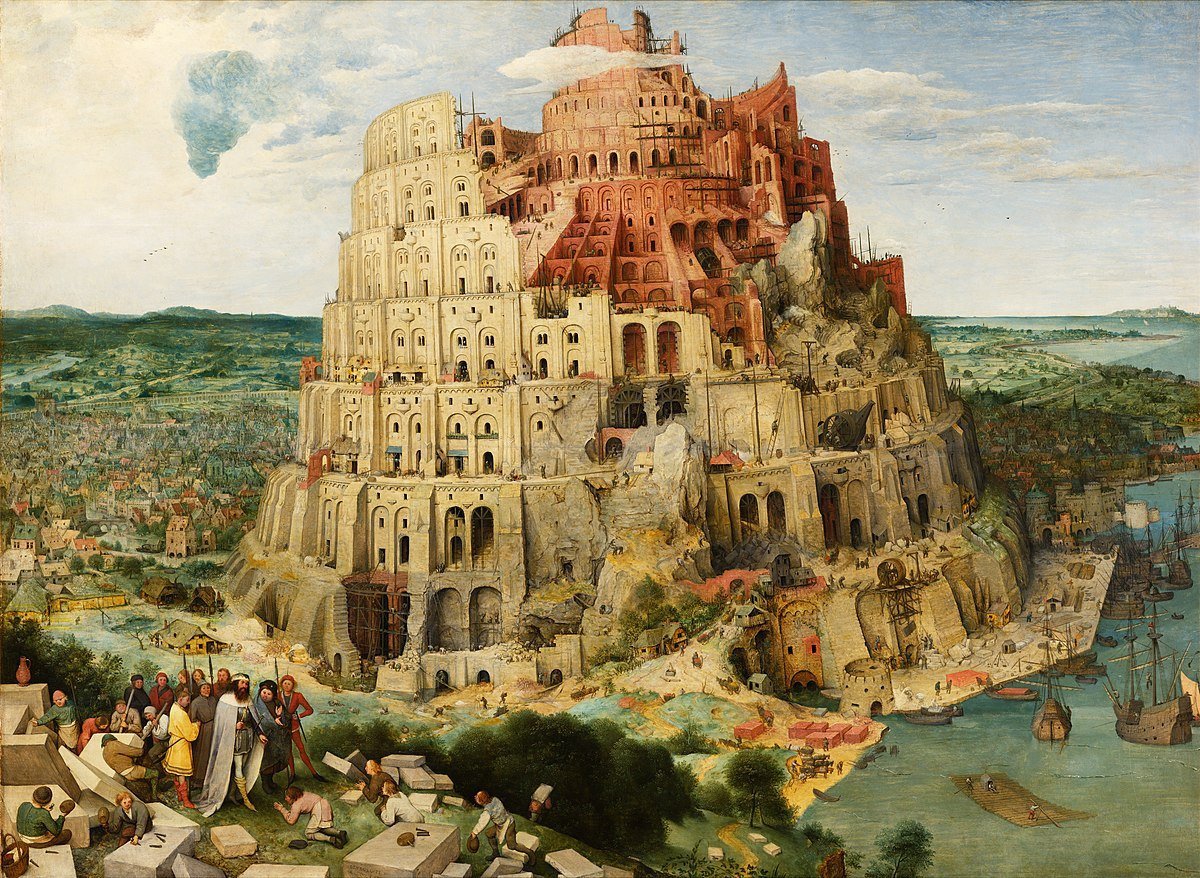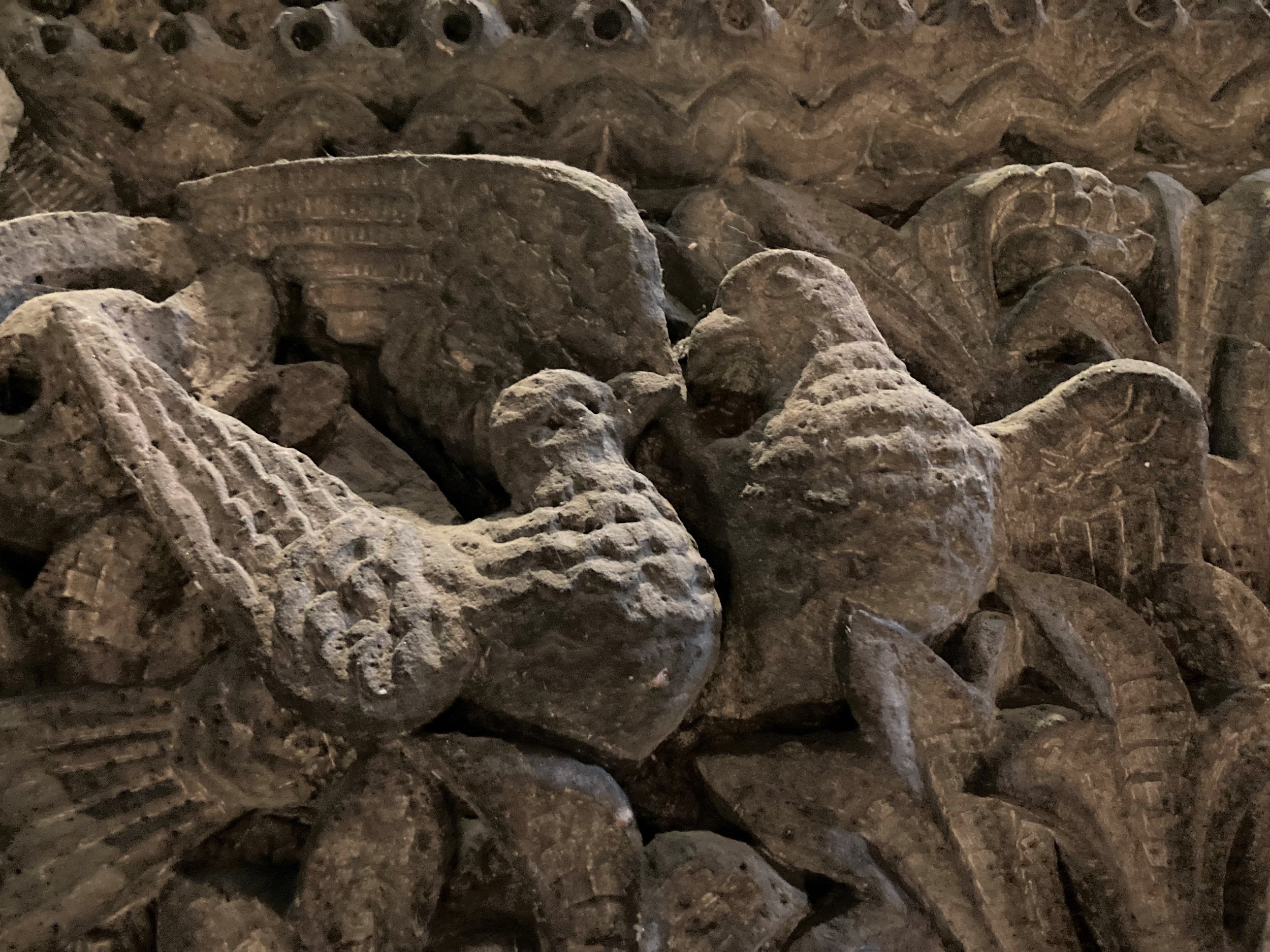“Grail Questions: A Reflection on the Work of Therese Schroeder-Sheker and the Chalice of Repose Project”
During Lent 2023 Therese Schroeder-Sheker, founder and dean of the Chalice of Repose Project, will serve as theologian and artist in residence, offering a six session Lenten program via Zoom on Tuesday evenings. I offer the following reflection in anticipation of the program, and plan to offer a final reflection at the program’s conclusion in Eastertide. - Father Paul Hunter.
In the first legend of the Grail, it is said that the Grail belongs to the first comer who asks the guardian of the vessel, a king three-quarters paralyzed by the most painful wound: “What are you going through?” The love of our neighbor in all its fullness simply means being able to say to him: “What are you going through?”… Only he who is capable of attention can do this.
- Simone Weil, ‘Reflections on The Right Use of School Studies with a View to the Love of God.’
The altogether inimitable French philosopher, mystic and political activist Simone Weil spent much of her brief life (she died at the age of 34) as a school teacher. She argued that the primary goal of education was neither marketable skills nor even good citizens, and certainly not to meet minimum standards of familiarity with prescribed subjects. Rather, the goal of school studies was what she called “attention.” Attention became a kind of technical term in her thought, which she distinguished sharply from the sort of “muscular effort” that usually passes for focus. “Attention consists of suspending our thought, leaving it detached, empty and ready to be penetrated… Above all our thought should be empty, waiting, not seeking anything, but ready to receive in its naked truth the object which is to penetrate it.” For Weil, love of neighbor and prayer are the great fruits of attention because “Prayer consists of attention. It is the orientation of all the attention of which the soul is capable towards God.”
In the Grail legend Weil references, the Grail is the original chalice used at the last supper, or perhaps a cup which caught the blood of Christ at the crucifixion. Knights sought this relic, and some finally made it as far as the castle where the cup was guarded by a wounded King, who could not be healed until he was asked the grail question. Even those who made it as far as the Grail Castle might fail in their quest if they failed to recognize the Grail when it appeared before them. But, if they did both recognize the Grail and ask the wounded king the question, they would receive the Grail and its healing power would work on both the King and the stricken land. Weil reads this as a symbol of how the love of our neighbors may heal and restore, but this healing can only be accomplished by those who know how to ask the right questions.
Attention is a way of knowing that runs counter to some of the most ingrained habits of modern thought. At least since Francis Bacon declared that knowledge is power, we have tended to equate understanding with mastery, technique and control. We tend, as a matter of course, to assume that all problems can be reduced to issues of management that may be solved with sufficient expertise. There may indeed be advantages to such a cast of mind. Still, such an attitude cannot teach us to ask the Grail questions; it does not even recognize them as questions worthy to be asked. But that is the one thing most needful: to ask the questions which heal and bind up, which can renew both soul and earth.
For that, a different way of knowing is required, not the powerful way of mastery, but the disarmed, contemplative, Marian way of knowing that Simone Weil named attention. Our Lady exemplified this way of knowing as the archetypal contemplative, the one who heard God’s Word with a receptive heart and brought forth the incarnate Lord; the one whom St. Luke continually shows to us in his gospel as keenly sensitive to the Spirit’s movement, beholding and treasuring in her heart all she saw. She did this, even when she knew that heart would be pierced, penetrated, and wounded by such beholding. It is the way of knowing exemplified as well by that other Mary who sat at Christ’s feet, while her sister Martha engaged in more obviously practical efforts.
Attention may be evoked suddenly by the appearance of something which exceeds our control and arrests our restless thoughts. Perhaps it is most often evoked by the experience of beauty. But it is also a capacity that may be nurtured by practice, which brings me, rather elliptically, to the work of Therese Schroeder-Sheker. I don’t remember now how I first encountered Therese’s music or her work with the dying. It may have been a blurb she wrote on the back of a book I was reading about Christian mysticism, or it may have been through reading her lyrical essays in Jesus the Imagination, a lovely, eclectic journal of art, theology and - occasionally- revolutionary politics. After her name came the description “Founder, The Chalice of Repose Project.”
The Chalice of Repose. This name conjured images of castles, deep medieval woods, armored knights seeking, finding and losing the grail - all of which appealed to my deep-seated Romanticism immediately. Nor, having learned more about the Chalice of Repose, does it seem that my romantic associations were too far off the mark, because Therese is someone who knows how to ask the grail questions.
The Chalice of Repose Project trains musicians in the palliative medical field of Music- Thanatology, the practice of offering care to the dying through music, which Therese has pioneered. Practitioners use harps, keeping vigil at the deathbed with the goal of “relief from either physiological pain or spiritual suffering” (Transitus 56). Again, there is something deeply romantic about this image, but it is not dreamy, not elevator music for the dying, as Therese takes pains to point out.
Prescriptive music is not a bedside concert, nor is it entertainment, ambient music, atmosphere music, auditory affection, favorite music, intuitive music, jazz improvisation, or distraction therapy. It is a sonic medicine, compounded and customized to meet the needs of the individual. (56)
The proper compounding of this medicine demands a discipline of attention and responsiveness to vital signs and respiratory cycles and more, by which a sympathetic resonance between musician, patient and instrument is established. Playing for the dying patient the musician-clinician “must phrase with the patients, beginning and ending phrases in alignment with their own cycles of inhalation and exhalation. Student interns must learn… how to use major and minor scales, chromaticism, harmony and rhythm clinically, because it is possible to stimulate or suppress body temperature, metabolism or any of the vital signs with the reorganizing properties of sound” (57). This is an active, rather than passive, receptivity. It is a practice that demands and cultivates attention, in order to “make love audible” (83).
Therese describes how the Chalice of Repose Project received its name, which came
…from the heart of quiet and sustained prayer; they were not words generated in intellectual discoveries. Following this, I saw-experienced a beautiful lily, with translucent petals and trembling veins, exuding an exquisite fragrance. The work with the dying was well underway. It had already permeated my imagination and soul and it was easy to recognize: “...That’s how we could be when tending to the dying, like that lily…” We could be open, like a chalice, translucent, with an embodied stillness or repose. (Transitus 74. Emphasis in original).
Reading these words I cannot help but think, of course, of the Eucharistic chalice and of the Grail, which I take to be a kind of mythic image of and reflection upon the meaning of the Eucharist. It is in the Eucharist that Christ makes himself completely and most intimately available to us, and in the Eucharist that we are united to both God and our neighbors, “For we being many are one bread, and one body: for we are all partakers of that one bread” (KJV 1 Cor 10.17). Each one of us who receives Christ in the Eucharist, becomes a vessel holding Christ within our very hearts.
But equally, we also receive and carry each other, fellow communicants, because it is the same Christ who dwells in each of us. We cannot receive the incarnate Lord without receiving his people. This is why Saint Paul warned the Church in Corinth that if we take communion while failing to love our neighbors, we also fail to ‘discern the Lord’s body’ (1 Cor 11.29). It is entirely possible to make it all the way to the Grail castle and yet fail to recognize the mystery in front of us - the mystery of Christ present in his people.
When we do recognize that mystery, however, we become ourselves healing vessels of his presence, carrying one another in our hearts and bearing each other's burdens (Gal 6.2). We can become “open, like a chalice, translucent, with an embodied stillness or repose” that welcomes our neighbors with all their wounds.
Therese’s work with the dying is certainly Grail work, but I see the same qualities of attention running through all her work, whether keeping vigil at a deathbed, writing to address the abuse crisis in the Church, or even reflecting on the spiritual labor of keeping a garden.
Therese describes this practice of attention simply as beholding. “Whether in silence, in speech, at harp, in prayer, working inside or working outdoors, beholding is the entree. Beholding builds a metaphysical ark, a currach for earth, air, fire and water” (“Garden Gate” in Jesus the Imagination. vol 4. 37). Yet another Mary, Mary Magdalene, shows the power of beholding.
The Magdalene was with Jesus at the Cross till the very end, and… she saw Him, the Risen Christ, pre-dawn on Sunday morning, in spring air that is quivering in the fragrance of blossoming trees… a distracted or preoccupied person would not be able to notice someone standing nearby, in spirit, nor would he or she have been able to receive his or her humanity mirrored back as an archetypal gardener engaged in manual labor” (“Garden Gate” 46-47).
For this reason, I am so grateful that Therese will be leading a Lenten program at the Cathedral of All Saints. In conversations preparing for this program, Therese has made it clear that this will not be a course in Music-Thanatology, or even in contemplative musicianship. In these conversations we will explore the spiritual power of beauty. Even as a person with no ambition to become a music-thanatologist, I believe Therese is someone from whom I can learn to ask those Grail questions a little more faithfully. And coming to Easter, perhaps I will not be too distracted to notice the Risen Lord standing beside me.

